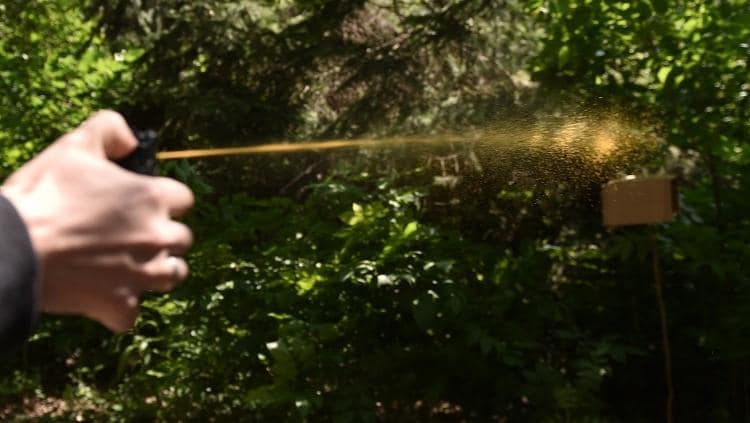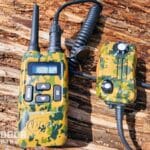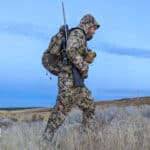You may think of dangerous animals as something that lurks in the woods or on backcountry trails. However, the reality is not quite so clear-cut.
There are millions of aggressive animals located throughout populated areas around the world. They may be a feral animal, a pet that has gotten out, or an injured wild animal that lashes out in fear or pain.
Regardless of the animal type, it is good to take precautions, so these potentially dangerous animals do not hurt you.
While you obviously want to avoid an attack, that isn’t always possible, so you should have a clear defense strategy. This leads to the question, “Can you use pepper spray on animals?” While it would be great to provide a simple answer, the reality of interacting with aggressive animals is a little more complex.
Keep reading to learn more about when and how to use pepper spray on animals.
Can You Use Pepper Spray on Animals?
Whether you are planning a backcountry hike in the Alaskan wilderness or just want to get safely through your neighborhood park, you may have considered carrying pepper spray to ward off aggressive animals. So, can you pepper spray animals?
In short, you can use pepper spray to stop a wide variety of aggressive animals, both wild and domestic, from attacking. When used correctly, it is one of the most effective and simplest ways to stay safe if you are attacked.
If you’re concerned about hurting the animal, there is no need to worry.
First of all, if your own life or well-being is threatened, you must defend yourself.
Secondly, pepper spray is designed to be non-fatal. While it is terribly uncomfortable for any human or animal, it is an effective way to deter an attack without putting an animal down.
Recommended: Best Pepper Sprays Reviewed (Strongest Self-Defense Sprays)
Using Pepper Spray on Different Types of Animals
Pepper sprays work by irritating the mucous membranes of animals or people — think eyes, nose, throat. Depending on the spray type, it may contain varying types and levels of irritants.
Capsaicin is a popular ingredient and is used in pepper sprays. Because they tend to be universally irritating, you can effectively use them to repel several different animals, including:
Dogs: In most cases, a standard pepper spray will work well on dogs — even on breeds like pit bulls or German shepherds that have reputations for being aggressive.
Cats: Feral cats can be more aggressive than you might think. Luckily, pepper spray is an effective way to prevent a cat attack.
Big cats: If, for some reason, you find yourself facing down a big cat like a mountain lion or bobcat, you want something more potent than a standard pepper spray. Look for a product labeled as “bear spray” for better protection.
Coyotes: You can use pepper spray to deter a coyote from attacking. However, making yourself as loud and big as possible will usually keep these typically-skittish canines at a distance. Hopefully, you won’t even need to remove the spray from its holder. The same thing goes for foxes.
Bears: If you think you may encounter a bear, you should carry bear spray. This is an FDA-regulated product that contains capsaicin. You can spray it far distances to help deter a charging bear. While bear spray has been shown very effective, you should not use a standard personal defense pepper spray against bears.
Bear spray is similar to pepper spray, but they are not exactly the same. Bear deterrent generally contains a higher concentration of the irritant for a greater effect on large bears. The canisters are larger to contain more product, and designed to spray farther (more than 25 feet).
Related: Best Bear Sprays To Save Your Life (Reviewed & Tested)
How To Use Pepper Spray on Animals
Using pepper spray is relatively straightforward. Many of the same rules for using it for personal defense against a human attacker apply to using it for an animal attack. Consider these tips for using pepper spray against an attacking animal safely.
1. Practice Ahead of Time
For not a lot of money you can buy an inert practice spray can. These simulate pepper spray and how it behaves.
It’s a good idea to buy one or two of these when you buy your pepper spray. That way you can test it out on a fence post and know what to expect if you ever have to use the real thing.
2. Use Slow, Deliberate Movements
Any sudden movements can provoke an immediate attack, which will make getting away from the animal harder. So keep every action — including taking the spray from its holder — slow, controlled, and small.
3. Check the Date
Expired pepper spray may not be effective since it loses potency over time. Propellants may also fail to work. That means that a particularly aggressive animal may just get more irritated, but not deterred.
4. Know Your Spray’s Maximum Distance
Each product will have an effective use distance. Deploying the spray too early means that it won’t be strong enough to work. Waiting too long may allow the animal to get too close.
5. Know Where To Spray
Some animals should be sprayed directly in the face while you want to spray a cloud in front of others, like bears, to slow their charge. However, if an animal is very close, you may need to lay on the ground and spray the air around you to create a safety zone.
6. Get Away From the Animal
Using pepper spray on animals is a temporary means to give you time to get away from it.
Deploy your spray and then get to safety while the animal is disabled or distracted. You could completely throw the animal off course, or you may only have a few seconds, so just go.
7. Clean Overspray
You may get pepper spray on yourself while using it. If that happens, you must clean any overspray according to manufacturer directions. It is also a good idea to change clothes after using pepper spray since it can linger in the material and cause irritation.
When To Use Pepper Spray on Animals
Learning when to use pepper spray on an animal is just as important as learning how to use it safely. Most animals do not attack as the first line of defense, and neither should you. So, just because you have pepper spray and know how to use it does not mean you should immediately reach for it.
It is good practice to make some noise on the trail. Wild animal attacks often happen because an animal is startled by a person.
Protective mothers will also defend territory where their young are feeding or playing, so you’ll want to stay out of known nest or den areas.
You can prevent some wild animal attacks by making yourself appear bigger than the animal. Try this first before deploying your spray. This may also work for domesticated animals like dogs or cats. However, when these acts fail, pepper spray can be an effective way to get yourself to safety.
Conclusion
One popular self-defense option against an animal attack is to use pepper spray. There are sprays explicitly designed for use on animals, but any pepper spray product intended for personal defense can be used against some animals in a pinch.
If you think you will be facing a large, wild animal, you may want to carry bear repellant. No matter what type of spray you use, you should know how to use it and what to do afterward.
Further reading:
Pepper Spray Vs Gel Vs Foam Vs Tear Gas – Full Comparison!













